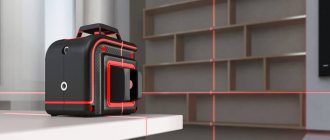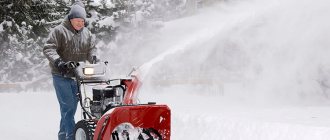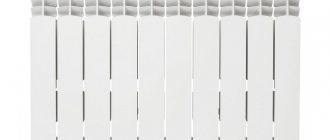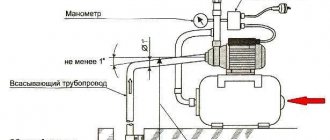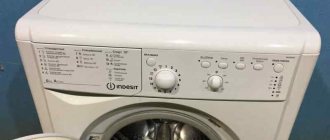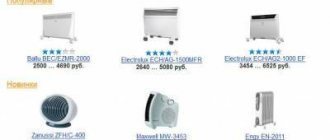Instantaneous water heaters have recently become a serious competitor to conventional electric boilers and gas water heaters.
The main feature of such devices is that they heat water directly during use. Instantaneous water heaters are compact, easy to install and maintain, and the user does not have to wait for the water to heat up in the tank.
Since instantaneous water heaters have become popular relatively recently, not all users know how to choose the right equipment.
To make the choice easier, we have compiled a list of the main technical characteristics that people pay attention to when choosing, and have developed a rating of the best instantaneous water heaters according to the 2021 version.
Rating of the best electric instantaneous water heaters of 2021
| Place | Name | Price | Rating |
| The best instantaneous water heaters by price/quality for 2021 | |||
| 1 | Electrolux NPX 8 Flow Active 2.0 | Find out the price | 9.8 / 10 |
| 2 | Stiebel Eltron DDH 8 | Find out the price | 9.7 / 10 |
| 3 | CLAGE CEX 11/13 | Find out the price | 9.5 / 10 |
| The best instantaneous water heaters for showers | |||
| 1 | Timberk WHEL-3 OSC | Find out the price | 9.9 / 10 |
| 2 | Electrolux Smartfix 2.0 6.5 TS | Find out the price | 9.7 / 10 |
| 3 | Thermex Surf 5000 | Find out the price | 9.4 / 10 |
| The best instantaneous water heater taps | |||
| 1 | Electrolux Taptronic | Find out the price | 9.8 / 10 |
| 2 | Edison Mini 3000 | Find out the price | 9.6 / 10 |
| 3 | Thermex Hotty 3000 | Find out the price | 9.5 / 10 |
| The best instantaneous water heaters with heating indicator | |||
| 1 | Electrolux NPX6 Aquatronic Digital 2.0 | Find out the price | 9.9 / 10 |
| 2 | Stiebel Eltron DDH 6 | Find out the price | 9.8 / 10 |
| 3 | Zanussi 3-logic 5.5 TS | Find out the price | 9.5 / 10 |
| The best inexpensive instantaneous water heaters | |||
| 1 | Atmor Lotus 3.5 | Find out the price | 9.8 / 10 |
| 2 | Bion IPO-A9 | Find out the price | 9.7 / 10 |
| 3 | Timberk WHEL-6 OSC | Find out the price | 9.5 / 10 |
Differences between free-flow and pressure devices
The difference between a non-pressure device is that the pressure inside it does not exceed atmospheric pressure, while a pressure water heater always experiences the pressure of the main water.
The non-pressure device protects the tap installed at the inlet from tap water pressure. Models of this type have low power (2-6 kW), do not provide sufficient water heating and are most often used in dachas or temporary residences.
Non-pressure models are designed to serve one point, therefore they are equipped with a watering can, tap or a tap + shower set. The load is small and replacement of the wiring with a more reliable one is not required
The pressure device does not have attachments and is a mini boiler with an inlet and an outlet. One device can be simultaneously connected to several analysis points at once.
Their power is enough to provide hot water to a kitchen sink, a shower, and a couple more taps. There are 2 categories of pressure devices - single-phase (3-12 kW) and three-phase (3-30 kW).
The location of the pressure water heater is under the sink, on the wall or in a cabinet. It is able to maintain a set water temperature and has an automatic on/off function
The disadvantages of a pressure device are a higher price and increased electricity consumption, however, during a period of hot water outage in a city apartment in which a large family lives, one cannot do without it.
How to choose an instantaneous water heater?
The main criterion by which an instantaneous water heater is selected is its power. The rate of water heating depends on it. At the same time, selecting a very powerful model does not always make sense. For example, if your apartment or house has copper wiring, you can safely choose a 6 kW device. If the wiring is aluminum, you should not buy a water heater with a capacity of more than 3 kW.
Among other characteristics, attention is paid to:
- Minimum flow: measured in liters per minute. If the water flow drops below the value specified in the instructions, the water heater simply will not turn on, as there will be a risk of equipment damage.
- Maximum permissible pressure: in urban water supply networks this figure ranges from 0.3-6 bar. Most models are designed specifically for these indicators.
- Maximum heating temperature : most instantaneous water heaters heat water to 50-60 degrees. This indicator is quite sufficient for domestic needs.
Also, before purchasing, you should clarify how many water intake points the water heater can serve. Most users prefer models that are installed on one tap or intake point, but if they are located nearby, it makes sense to buy a model that can serve several water intake points at once.
Why is an electric model better than a gas model?
In city apartments there is no need to choose between two types of devices, since they usually use electric, safer models.
The exception is apartments in which geysers were installed during the process of equipping the premises upon delivery of the house. This applies to “Khrushchev”, “Stalin” and some types of panel houses built in the 60-70s of the last century.
Diagram of the gas water heater. A necessary condition for its operation is water pressure of at least 0.25-0.33 atm (approximately 1.5-2 l/min), otherwise the heating elements will not turn on
In country houses, water is often heated using a powerful floor-standing boiler, but some people prefer to use a gas water heater out of habit.
Its use is appropriate for stove heating or in warm climates that do not require the installation of heating equipment.
Image gallery
Photo from
Practical application of a geyser
Gas equipment room
Chimney of gas equipment
Connecting a geyser
Electric water heaters are considered safer, although their operation is more expensive than using geysers. In addition, when heating with gas, exhaust hood and reliable ventilation are required, otherwise there will be a risk of carbon monoxide poisoning. Savings are considered a plus, since gas prices are lower than electricity.
In older houses, it is not possible to use a powerful electric appliance (above 3.5 kW), so you will have to make do with either a weak water heater or a gas water heater. Thus, if there is a choice, consider the state of electrical networks and ventilation, water pressure, and the cost of fuel (gas or electricity).
Image gallery
Photo from
Electric instantaneous indoor heater
Electrical connection points
Compliance with electrical safety measures
Simple connection diagram
We invite you to familiarize yourself with the guidelines for choosing a water heater in the article dedicated to these issues.
Which company should you choose?
The manufacturer of the water heater also plays an equally important role. If you buy a product from a little-known brand, no one can guarantee that the device will last a long time. Therefore, it is better to immediately give preference to equipment from well-known and time-tested brands.
As an analysis of user reviews showed, the best manufacturers of instantaneous water heaters in 2021 were recognized as Electrolux, Stiebel, CLAGE, Timberk, Thermex, Edisson, Zanussi, Atmor and Bion. We included the most successful models of these brands in the rating.
Features of wall mounting
Instantaneous water heaters are installed in a place convenient for control, most often on the wall near the sink or shower. For fastening to concrete panels or brick walls, dowels are used; for drywall (not recommended) - special moth-type devices. The product should be positioned according to the instructions; it should not be rotated.
If you plan to install the water heating device near the water point, that is, in the bathroom or in a combined toilet, make sure that the degree of protection is not lower than IPX4
Connection to the electrical network must be made through an RCD, especially if the manufacturer does not provide a protective automatic shutdown function.
A three-core copper cable is pulled from a common grounding panel, then either a differential switch or a circuit breaker is installed.
Installation diagram for instantaneous water heater: 1 – pipe with cold water; 2 – tap (mixer); 3 – shut-off valves; 4 – check valve + filter set; 5 – RCD; 6 – electrical panel
It is better to equip the supply pipes for a pressure water heater with ball valves - for ease of installation/dismantling. Remember that a free-flow device has only one pipe - for connecting cold water.
You can find out more about the rules for installing ducts in the article presented to your attention.
What do you need to know before purchasing?
Instantaneous water heaters made in Sweden, Italy, Germany, Poland and Russia are widely represented on the modern market. You should choose a manufacturer based on cost and reviews.
How not to make a mistake: 5 tips when buying irons from little-known brands
When you have already decided on the required power of the electric water heater, before choosing a specific model, it would be useful to use the following tips:
- Go to your service organization and find out whether the electrical network of a particular house will allow you to connect an instantaneous water heater. You may be advised to use additional equipment to help you operate your heating appliance safely and reliably.
- It is necessary to find out how difficult it is to install the device, whether it can be done independently or is it better to contact specialists. Decide on the cost of the work itself and the materials that will be required for this.
- Ask about the reliability of the selected heater model, the terms of warranty service, how difficult the repair is and what the cost of spare parts is. It would also be useful to find out where the nearest service center is located. In case of breakdown, this will save your nerves and money.
- When choosing a gravity heater, it is worth remembering that to compensate for the lack of the required amount of water, small holes are made on the nozzles. If there are a large number of impurities in the water, they “clog” very quickly and this can result in overheating of the device. Therefore, such attachments must be systematically washed with anti-scale agents.
- Many low-pressure water heaters with low power are simply not intended for use in the cold season - they simply cannot heat the water to more than 25-30o C. Therefore, you can consider heaters that are made in countries with colder climates.
Working with various types of pipelines
The diagram for connecting the water heater to the water supply in the apartment and the choice of tools and materials also depend on the type of existing pipeline.
Polypropylene pipelines
To work with polypropylene pipes, you will need a pipe cutter and a special soldering device. In this case, the tees are selected from a similar material, and MPH couplings are used to connect them to the taps.
Polypropylene coupling with metal thread
The process itself is not difficult if the pipes are open; with hidden communications, the process is complicated by the need to open the top layer above the pipes. Only after this will it be possible to crash into the water supply.
Do-it-yourself storage water heater installation using polypropylene pipes
Metal-plastic pipelines
Metal-plastic pipes are usually laid on the surface, so the likelihood of complications is eliminated. Installation is carried out using fittings, and their choice is quite large, so any water heater installation scheme can be implemented without additional problems.
The insertion is carried out using tees, to which, depending on the location of communications and the installation location of the heater, additional pipes or directly flexible hoses for input are connected.
The photo shows an option on how you can install a water heater with your own hands using metal-plastic pipes and compression fittings
Steel pipelines
The original “vampire” tee will allow you to do without welding when working with a steel pipeline. Structurally, it is a clamp with an outlet, which is put on the pipe (of course, the water supply should be turned off before installation) and secured with clamping screws. A rubber gasket is used for a tight fit.
Using a repair tee clip is a fairly simple installation method, but not the most reliable
After installing the clamp with the outlet, a hole is drilled through the latter in the main pipeline. To perform such work, the use of a protective sleeve is required. It will prevent damage to the internal threads when drilling. A tap is installed on the outlet thread and then a supply hose to the boiler.
